What are FADs?
FADs are drifting or anchored buoys or rafts that attract and aggregate pelagic fish, making them easier to find and catch. Fishers have long known that fish congregate around naturally occurring floating objects such as logs or a dead whale and that by mimicking this effect fish aggregation could be exploited. FADs do not increase the abundance of fish, but only redistribute them into a smaller area. It is also important to note that drifting FADs and anchored FADs have quite different uses, impacts, and management concerns.
Today there are thousands of FADs in use worldwide for industrial handline, purse seine, and pole and line fisheries. There are three basic designs for anchored FADs – the spar buoy and the Indian Ocean FAD as well as the far more common artisanal FADs made from local materials such as bamboo and coconut fronds.
The Benefits of Anchored FADs
Enhanced Food Security
Anchored FADs are an important tool for the development of sustainable artisanal and small-scale commercial fisheries that provide food and livelihoods to coastal communities in developing countries. FADs make a valuable contribution towards food security by helping meet increasing demand for fish influenced by population growth and the effects of climate change. When lagoon and reef species become depleted, coastal fishers will have to transfer fishing effort offshore to maintain food security. FAD programmes have the potential to play an important role in this transfer of effort.
Supporting Management Measures
FADs can be a useful tool for fisheries managers as they can reduce the use of fishing gears or methods that may damage habitats. However, FADs should be deployed only within a framework for effective and cooperative fisheries management between governments, coastal communities and individuals.
More Economic Fishing
Compared to open sea fishing, fishing around FADs can be more economical as less fuel is used searching for fish, and catch rates near FADs are generally better.
Bycatch and Discards
\
Unlike purse seine fishing on drifting FADs, which can result in considerable bycatch, including juvenile tuna, artisanal fishing on anchored FADs with selective small-scale hook and line fishing methods produces minimal bycatch. Bycatch can be mitigated by training FAD users in the proper techniques to handle and release bycatch species such as turtles and birds if caught. Circle hooks are the best choice for most FAD fishing techniques.
Sports and Tourism Potential
FADs are very popular with recreational and sports fishers. Small-scale fishers can develop these activities as an alternative livelihood or source of income. Activities can include leasing or renting rights to game and spear fishing enterprises.
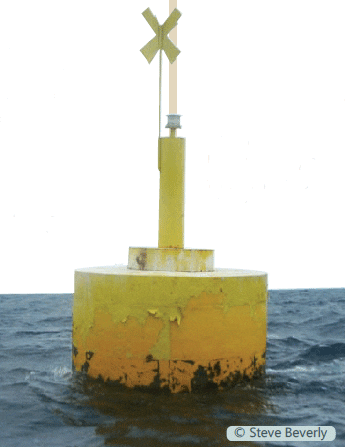
Fisher Safety
Every year thousands of fishers are lost at sea because of adverse weather, vessel breakdown, and/or human error. Fishing around anchored FADs is safer than fishing in the open sea because searchers will know where to start a search if someone goes missing. A boat that loses power may tie off to a FAD and wait for rescue, but usually there is more than one boat fishing at a FAD so help will be right there.
Risks and Precautions
Anchored FAD Programmes can be Expensive
The materials, the running costs for survey and deployment vessels, as well as monitoring and maintenance costs can range from USD 2,000 to USD 4,000 per FAD. Funding must be considered carefully before a FAD programme is started.
The Cost/benefit Question
Investment in a FAD programme may not be justified if the returns don’t outweigh the costs. Those providing funding may therefore require a cost/benefit analysis. However this can only be done if catch and effort data are available. This is one of the most challenging aspects of a FAD programme. One solution is to obtain good data from the most responsible FAD users and then to extrapolate their data to reflect total FAD usage. A pilot programme with one or two FADs should be conducted before investing in a larger FAD programme.
Short Life Span
Some FADs last for several years, but others disappear soon after deployment. FADs are lost because of design flaws, environmental forces, vandalism, theft, shark bite, damage from fishing gear, and damage from vessel encounters. Longevity can be increased by carrying out regular monitoring and maintenance, and by developing a public awareness programme and a code of responsible fishing practices around FADs.
Avoiding User Conflict
Unless carefully managed, FADs may cause user conflict. A village FAD, for example, is probably for the use of village fishers, but others may fish there and this can lead to conflict and possibly vandalism. Consultation with fisheries departments, marine departments, village representatives, and FAD users, in conjunction with a public awareness campaign may help to mitigate this risk.
Over Exploitation
There is concern that pelagic species that aggregate at FADs can be easily over exploited. Fishers should be encouraged to collect catch and effort data, so that fisheries managers can monitor the health of fish stocks.
Delicate Ecosystems
FADs may disturb delicate ecosystems if they are deployed in the wrong places. FADs should not be deployed in sanctuaries or reserves and important ecosystems that are vital for species such as dugongs.
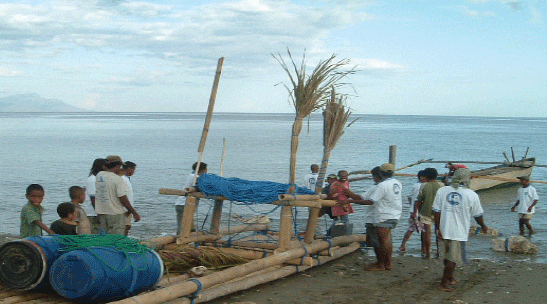
Marine Debris
FADs that break from their moorings are a form of marine debris and pose a threat to navigation safety and the marine environment. The use of materials such as plastics should be avoided while unused FADs should be diposed of ashore. Regular monitoring and maintenance along with fisher training and public awareness campaigns will lessen the impact that FADs have on the environment.
The Need for Effective Management
FADs programmes should form part of an effective and cooperative fisheries management plan. Governments and fisheries departments should also develop policies and legislation in a participatory manner on FAD ownership, management and rightsbased use.
This should cover any limits on FAD numbers, permitted fishing gear and techniques, marking of FADs using lights to prevent boat collision and how fishers will be informed about FAD locations. In addition, rules on on-shore FAD disposal, the type of materials that can be used to build them as well as sanctions for not abiding by regulations should also be included. It is important that this process is undertaken before installing statefunded FADs.
Responsibilities
For Users
FAD users should only take what they need, and they should return unwanted species back to the sea alive and well. They should provide catch and effort data to the local fisheries office on a regular basis, they should follow local rules for FAD usage, and they should report if a FAD has any maintenance problems or has gone missing.
For Governments
States have responsibilities, too. The FAO Code of Conduct for Responsible Fisheries includes the following on FADs, “States should, within the framework of coastal area management plans, establish management systems for…fish aggregation devices. Such management systems should require approval for the construction and deployment of such…devices and should take into account the interests of fishers, including artisanal and subsistence fishers.” and “States should ensure that the authorities responsible for maintaining cartographic records and charts for the purpose of navigation, as well as relevant environmental authorities, are informed prior to the placement or removal of…fish aggregation devices.1”
For a single bamboo FAD deployed by a village these requirements may be unnecessarily complex, however for large-scale FADs or where large numbers of FADs are to be deployed the aforementioned must be considered.
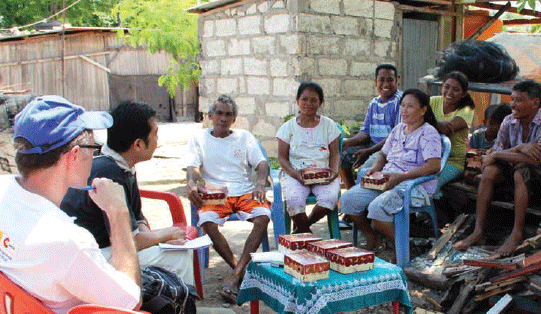
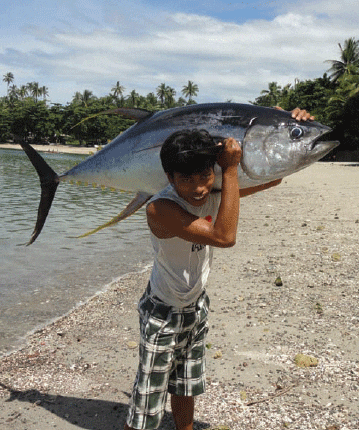
Choosing a FAD Site
A FAD should be located at a distance from shore that is not too far for small boats to reach safely, but is far enough away from the coast or reef so as not to interfere with natural fish aggregations. A FAD should be near a centre of fishing activity, where the bottom is not too steep, and the water depth is between 100 and 1,500 m. Marine charts are an essential source of bathymetric information such as depth and bottom contours, and prevailing currents as well as shipping lanes. Fishers should be consulted to point out areas that have a history of productive fishing for pelagic species. Fisheries departments can also give advice on where productive fishing grounds are located, and on places to avoid such as reserves or whale sanctuaries and reefs or seamounts that are already aggregating fish.
Best Fishing Practices
Fishing Methods
The best methods for artisanal and small-scale commercial fishing around FADs are hook and line techniques that target pelagic species such as tuna, billfish, mahi mahi, wahoo, and rainbow runner, and that require minimum investment in gear and equipment.
Fish Handling and Marketing
Post-harvest losses should be avoided through good handling practices and by maintaining the cold chain. Likewise a ready market with buyers and a good customer base should be established to gain maximum benefits from a FAD programme.
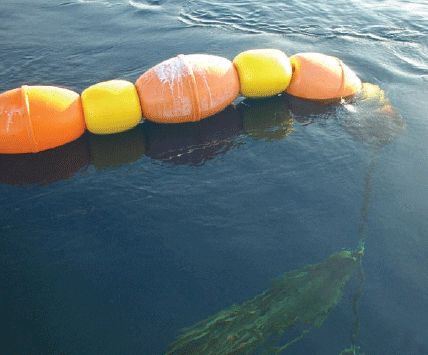
March 2013



